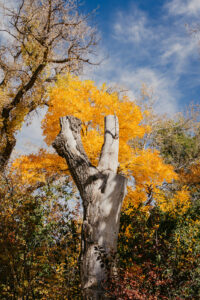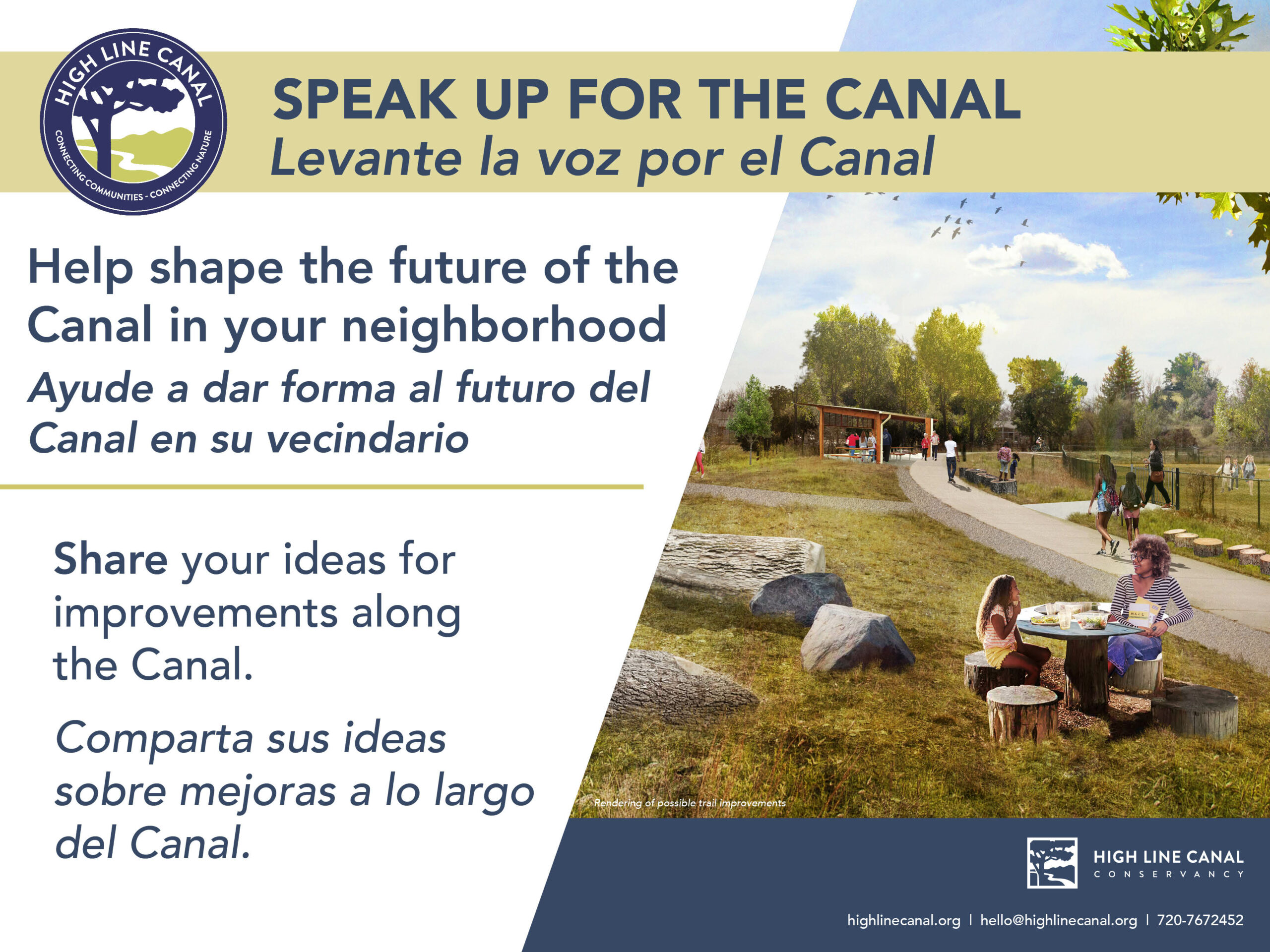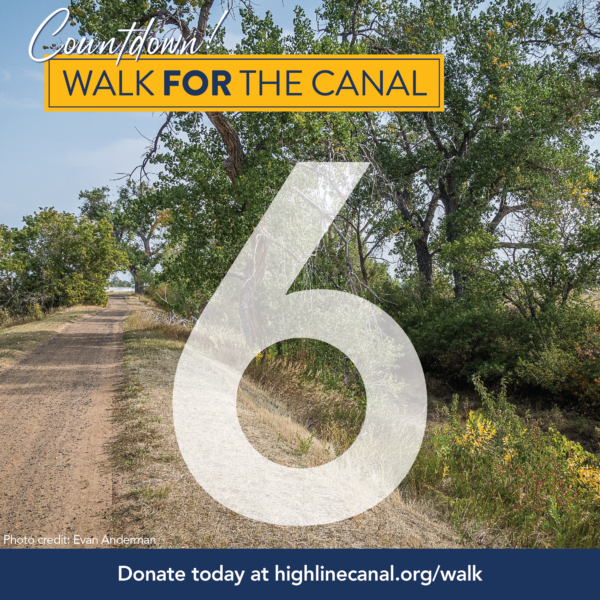Tree Care + Planting
Together we are revitalizing the High Line Canal’s tree canopy
Tree Canopy Care
Now 140 years old, the High Line Canal is outliving its historic function as an irrigation utility and has taken on new life as a recreational, ecological, and stormwater management resource. With increased trail use, an aging tree population, and scarce water supplies in the West, comprehensive care of one of the Canal’s most beloved assets–the tree canopy–is a top priority. The Conservancy, along with its partners Denver Water and the adjacent jurisdictions, are collaboratively taking action to maintain and revitalize the tree canopy. In 2018, these partners initiated a tree maintenance program which prioritizes safety for recreational users and the long-term health of the tree canopy. This significant, 71-mile-long project is only possible with the commitment of the Conservancy and partners’ joint funding, staff and expertise.
Resources
Learn more about the Canal’s plant community and the work the Conservancy and our partners are doing to understand the corridor’s natural resources and enhance the ecological health of the greenway.
- What are habitat trees?
- Mile High Youth Corps Russian olive removal
- Denver Botanic Gardens Guide to Common Plants of the HLC near Eisenhower Park
- Denver Botanic Gardens Canal-wide Botanical Survey (2018)
- Canal-wide Tree Inventory (2016)
- Cherry Hills Tree Watering Pilot Report (2014)
- Denver Water Tree Assessment Study (2009)
Tree Canopy Care
Tree Canopy Care
Tree care and maintenance is taking place along the entire 71-mile Canal corridor, from Douglas County to Aurora. With over 23,000 mature trees along the corridor, continuous care and maintenance is required to steward the Canal’s canopy and ensure a safe and vibrant trail corridor. Since 2018, over 1,000 unhealthy trees have been pruned or removed from the corridor. Tree maintenance crews continue to work along the Canal, prioritizing trees that pose a safety concern.
The tree canopy care program aims to:
- Maintain a safe environment for trail users and adjacent property owners.
- Preserve and enhance the health of the tree canopy.
- Support a healthy ecosystem for plants and wildlife.
Changing Conditions
Cottonwoods are the most abundant trees on the Canal, composing 40% of the corridor’s canopy. Historically, these riparian trees were able to establish and thrive on the corridor due to the abundance of irrigation water that allowed the man-made Canal to mimic a natural waterway. Many of these cottonwoods are now reaching the end of their lifespans—lifespans which have seen conditions along the Canal change as the corridor grew from an irrigation utility into a stormwater management system and regional recreation trail. As the varied landscapes of the Canal evolve with changing times and limited water, the Conservancy continues to work closely with Denver Water and the jurisdictions to:
- Maintain data on the trees and their condition as a tool for long-term management.
- Leverage private funding to ensure long-term, high-quality care of the entire tree canopy.
- Develop tree planting programs to revitalize the canopy for years to come.
Tree Canopy Care FAQs
Tree Planting Project
Tree Planting Project Overview
The 71 miles of the High Line Canal are home to over 23,000 mature trees (trees larger than six inches in diameter), making the Canal a vital component of the region’s urban forest. Cottonwoods have been the defining tree of the Canal corridor for over a century, with a 2016 inventory finding cottonwoods to compose over 40% of the Canal’s canopy. As many of these cottonwoods near the end of their lifespan and become increasingly stressed by low water availability, it is crucial that new trees are planted along the corridor to revitalize the canopy for years to come. To this end, The Plan recommends planting 3,500 trees, or 50 trees per mile on average, along the Canal corridor over 15 years. So far, with our partners we have:
- Planted 325 new trees across the Canal in Centennial, Denver, Greenwood Village, and Littleton.
- Collaborated on the creation of a tree planting palette that prioritizes drought-tolerant species which will help the corridor’s canopy become more resilient.
- Initiated the development of planting plans that ensure the best approach is being taken along each reach of the Canal, evaluating both the potential to water new plantings by truck and the possibility of extending irrigation lines along the corridor in some areas.
Tree Planting Palette
As Denver Water reduces its reliance on the Canal for irrigation delivery and local jurisdictions embrace its potential as green stormwater infrastructure, the tree canopy must evolve to reflect these changing conditions. The Conservancy’s tree planting palette prioritizes drought-tolerant species that will provide shade as the Canal loses parts of its cottonwood canopy. The Conservancy is also piloting the planting of a small number of native, riparian trees in reaches of the Canal that hold stormwater and in locations where trees can be planted near the base of the Canal channel. This blend of drought-tolerant and native trees will create a resilient canopy for the benefit of the environment and trail users alike.
- Xeric Species
‘Xeric’ refers to species that are drought-tolerant and able to survive in dry environments- Bur Oak
- Catalapa
- Chinkapin Oak
- Common Hackberry
- Honeylocust
- Kentucky Coffeetree
- Shumard Oak
- Native, Riparian Species
‘Riparian’ refers to species that naturally occur along waterways and are adapted to wet environments- Boxelder
- Narrowleaf Cottonwood
- Plains Cottonwood








